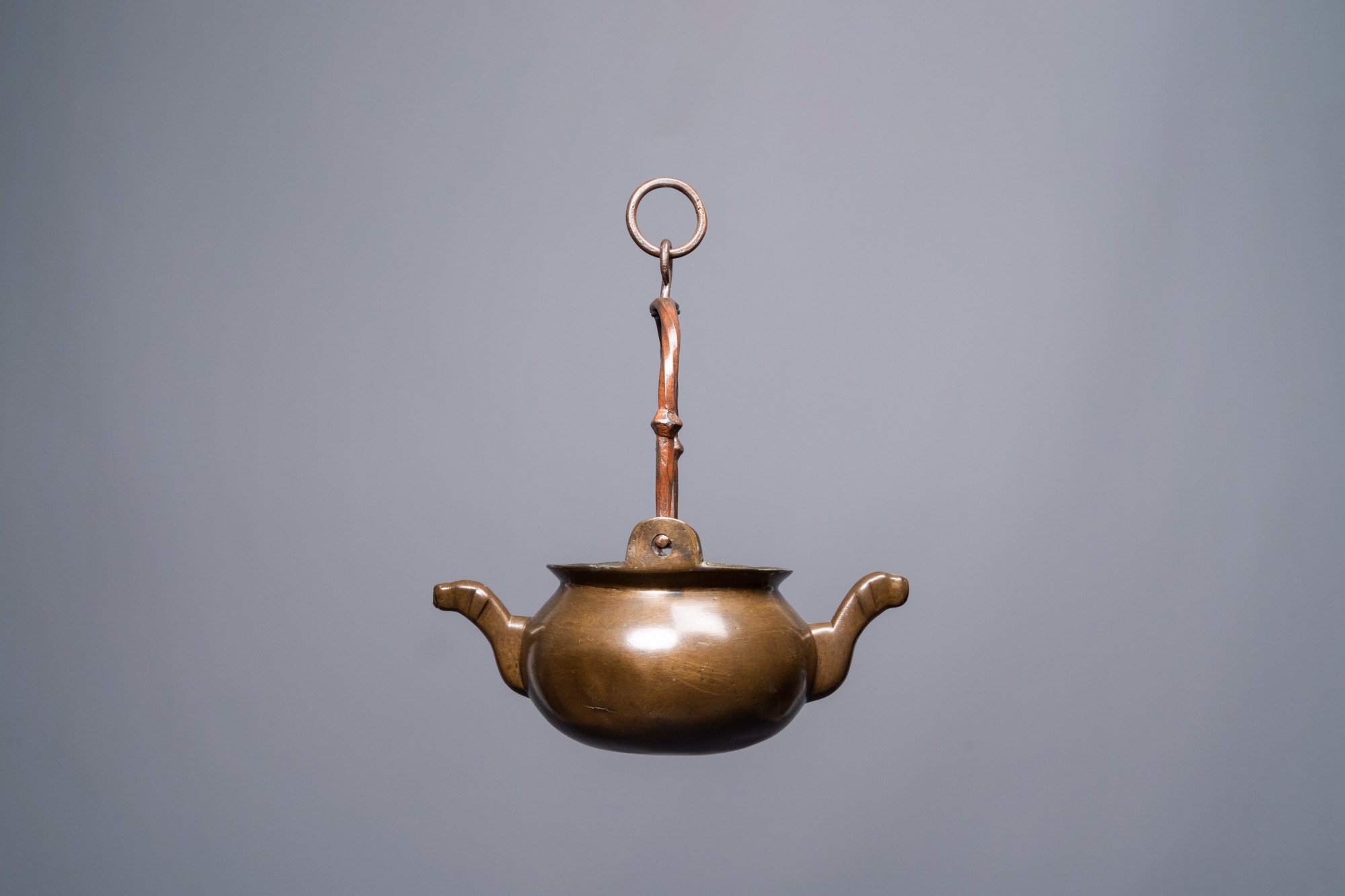


Private collection, Belgium
A lavabo or hanging laver or puisette was a domestic utensil used from the 13th to the 16th centuries to contain and dispense water for the washing of hands. Typically suspended above or placed in a basin or positioned in living quarters or a bedroom niche in the medieval home, the quantity of the water desired was delivered by pivoting one or other of the two spouts. The lavabo gradually replaced the ewer in many households. The basic shape of the body was usually that of a flattened sphere. The rim, the spouts and the junctions of the loop handle with the body presented opportunity for the craftsman to demonstrate his artistic skill. With a beautiful rich patina, our example retains its original swing handle, pivoted loop and hinges, the sockets with well-preserved face motifs. The spouts are styled as dogs the details of which remain clearly discernible.